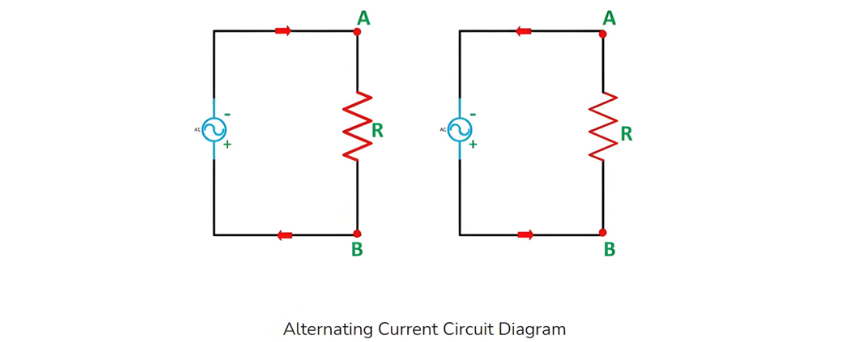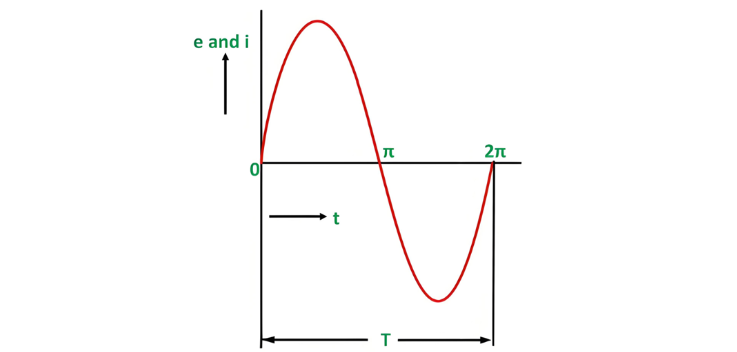AC Circuit Fundamentals
An AC circuit is defined as a circuit energized by an alternating power source. Alternating current (AC) is widely used for domestic and industrial applications due to its unique characteristics: unlike DC, both the magnitude and direction of current and voltage in an AC circuit vary periodically over time.
AC waveforms typically follow a sinusoidal pattern, completing one cycle with equal positive and negative halves. This behavior is mathematically described as a function of time (t) or angle (θ = ωt), where ω represents the angular frequency.
Impedance in AC vs. DC Circuits
- In DC circuits, current opposition stems solely from resistance (R).
- In AC circuits, opposition arises from:
- Resistance (R)
- Inductive reactance (XL = 2πfL), where L is inductance and f is frequency
- Capacitive reactance (XC = 1/(2πfC)), where C is capacitance
Phase Relationships in AC Systems
In AC circuits, current and voltage are characterized by both magnitude and phase angle. Their phase alignment depends on circuit parameters (R, L, C). Sinusoidal quantities like voltage and current vary with the sine of angle θ, making them fundamental to AC system analysis.
Advantages of Sinusoidal Waveforms in Power Generation
Sinusoidal voltage and current are globally preferred for power generation due to:
- Reduced iron and copper losses in transformers and rotating machines, enhancing efficiency.
- Minimized interference with adjacent communication systems.
- Lower disturbance levels in electrical circuits.
Alternating Voltage and Current Dynamics

Waveform of Alternating Voltage and Resistive Current
The waveform of alternating voltage over time and the current flowing through the resistance (R) in the circuit are shown below:

Types of AC Circuits and Key Terminology
AC Circuit Classifications
AC circuits are categorized based on their component configurations:
- Pure resistance (R) circuits
- Pure capacitance (C) circuits
- Pure inductance (L) circuits
- RL (resistance-inductance) combinations
- RC (resistance-capacitance) circuits
- LC (inductance-capacitance) circuits
- RLC (resistance-inductance-capacitance) circuits
Essential AC Circuit Terms
- Amplitude:The maximum positive or negative value of an alternating quantity within one cycle, also known as peak value or maximum value. Symbolized by Em/Vm for voltage and Im for current.
- Alternation:A half-cycle of an alternating waveform, corresponding to 180° electrical.
- Cycle:One complete set of positive and negative values of an alternating quantity, equivalent to 360° electrical.
- Instantaneous Value:The voltage or current magnitude at any specific moment, denoted by e (voltage) or i (current).
- Frequency (f): The number of cycles per second of an alternating quantity, measured in hertz (Hz).
- Time Period (T):The duration in seconds to complete one cycle of a voltage or current waveform.
- Waveform:A graphical representation plotting instantaneous values of an alternating quantity (voltage/current) on the y-axis against time (t) or angle (θ = ωt) on the x-axis.
An alternating voltage periodically reverses polarity and magnitude, while alternating current follows suit—changing direction and amplitude with time. When an AC voltage source connects to a resistive load (as shown below), current flows in one direction during the positive half-cycle and reverses during the negative half-cycle, mirroring the source’s polarity changes.

